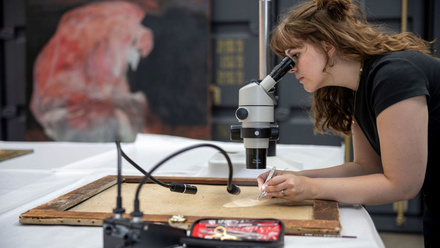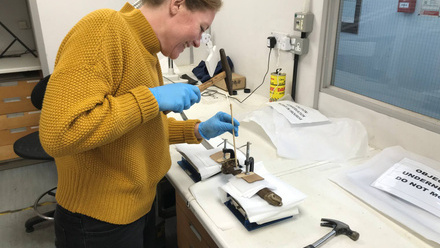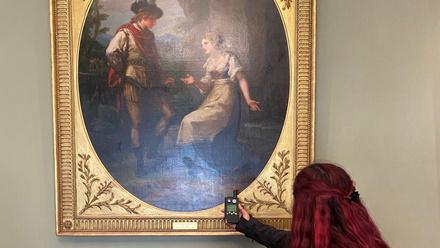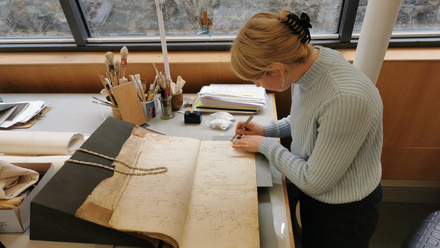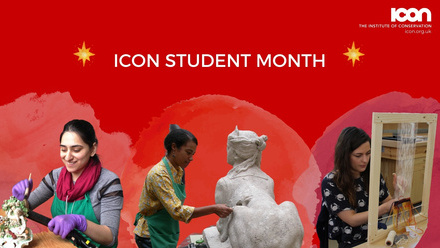The Bowes Museum was purpose built in the 19th century by John and Joséphine Bowes and contains several rooms dedicated to housing furniture, textiles and other objects belonging to the Bowes, laid out on open display in themes such as Joséphine’s Bedroom and The Dining Room. It was in the latter that an increase in moth activity was detected on the demi-diamond traps during routine IPM checks for the period of March to June, which coincided with the museum's closure due to the COVID-19 lockdown. The Demi-diamond traps contain a pheromone-based pad which attracts clothes moths (Tineola Bisselliella) and the museum’s Integrated Pest Monitoring (IPM) system indicated a particular spike in these and spider beetles at the end of May.
Environmental Data
Using the museum’s Hanwell monitoring system, it was interesting to compare data from the rooms affected this year during the lockdown to the previous year to establish what impact if any the museum’s closure had on the environment. The graphs indicate that a temperature range between 18 and 20 °C was successfully maintained for both years. However, the Relative Humidity (RH) readings for the Dining Room (figures 1 and 2) show that the humidity levels between March and July this year fluctuated more than for the same time period the year before. In the museum’s exhibition spaces however, dehumidifiers are used to maintain stable RH. Controlling RH in historic houses is more challenging given that they are more susceptible to outside weather conditions which is less likely in modern purpose-built museums.
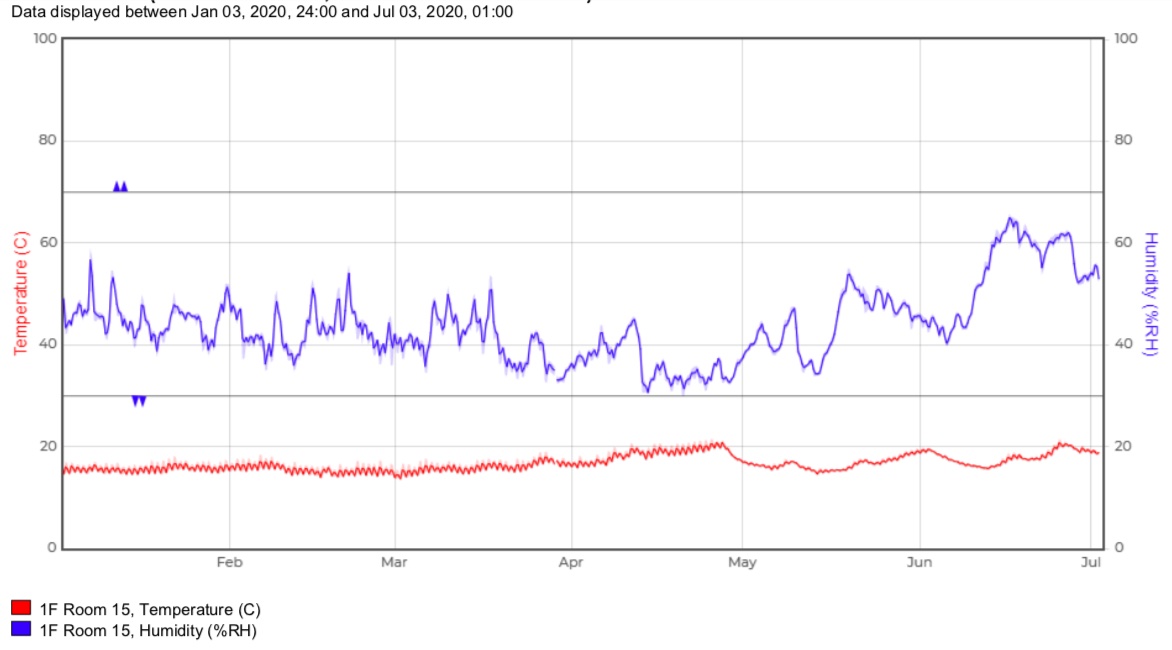
Figure 1: Graph showing Hanwell data from the Dining Room, January to July 2019
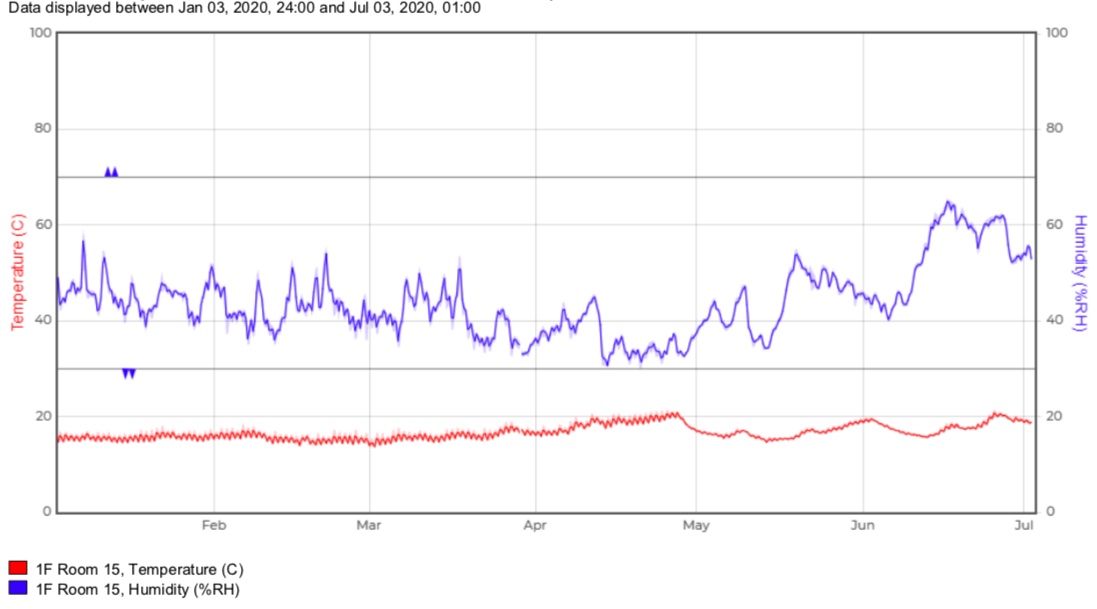
Figure 2: Graph showing Hanwell data from the Dining Room, January to July 2020
Establishing the Plan
Clothes moths which were found on traps and in particular their larvae can cause significant damage to textile objects, especially those made of keratin (wool and silk), which they feed on. The galleries are regularly cleaned, with the last deep clean in 2018. The conservation team had been making plans for the next clean which were initially disrupted by the lockdown in March. Despite the challenges of bringing a team in to deal with the clothing moths quickly and adhering to government guidelines for returning workers, in June a plan was made. The conservation team came in to inspect all objects in the affected rooms and to surface clean those which might have casings as well as remove surface debris and dust which had built up since the last clean. Social distancing was adhered to whilst working; our team mainly worked in separate but adjoining rooms, wearing masks and gloves when needing to be closer to move objects and using our own individual cleaning kits.
The demi-diamond trap with the most moths was located under a large oak table and on top of a carpet which needed to be fully accessible for treatment. The last time this table had been moved it required ten people to lift it; this would have been extremely difficult during social distancing. It was decided that one end of the table should be lifted at a time and skates would be placed under the two legs at that end. This method required a lot less carrying time and could be done with only two people lifting the table and two people placing the skates. When this had been carried out on both ends the table was gently moved off the carpet and kept on the skates while the carpet was frozen and then vacuumed.
Treatment
Work was carried out systematically and objects which were small enough to be put in a freezer at -18°C were, such as the carpet. This was subsequently rolled out in an empty room, surface cleaned and inspected for pest damage by Charlotte. Fortunately, there was no new damage found and it is thought that with a breeding cycle between May and October the deep clean will have disturbed any eggs laid before they become larvae.
All objects with upholstered textile components such as dining chairs and settees were inspected for insect activity and surface cleaned with a MuseumVac® on low suction, with the aid of a mesh screen to protect some of the more fragile woven seat covers. Every object with wooden or gilded surfaces was lightly dusted with soft brushes to remove particulate soiling that had accumulated since the last clean. In some instances, satisfying visible before and after results were achieved with vacuuming alone (figure 3.).
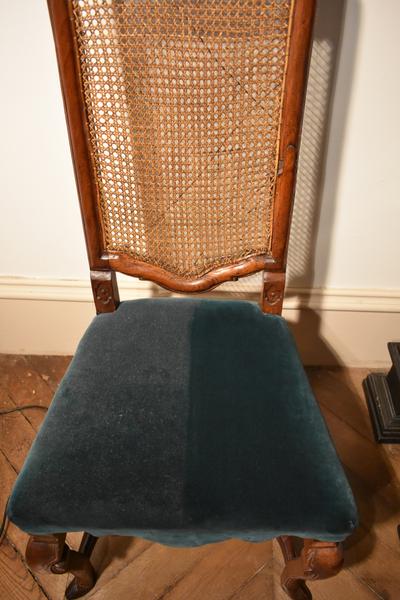
Figure 3: Before and after surface cleaning of a cane-backed chair (FW.15a)
Since the museum is only closed to the public two days a year, Christmas and Boxing day, this was also an opportunity to give a more thorough clean to the ceramic objects without disrupting the public's enjoyment of the display. Kezia cleaned many ceramic objects in the galleries; mainly in The Dining Room (figure 4.). Several required wet cleaning with water using cotton buds to remove more ingrained dust which was affecting their colouration. Many of the ceramic’s also had fingerprints on them due to people leaning over the barriers and touching the objects, a record was kept of the objects affected and the layout of the room was changed slightly to make sure they were out of reach. The silverware on the dining table was also suffering from a layer of dust although this was not as ingrained and could be removed using a dry cloth. The glassware was suffering greatly from discolouration especially in the grooves created in the etched crest design on each glass. This was cleaned using wet cleaning with cotton buds like the ceramics but when this proved ineffective some acetone was used.
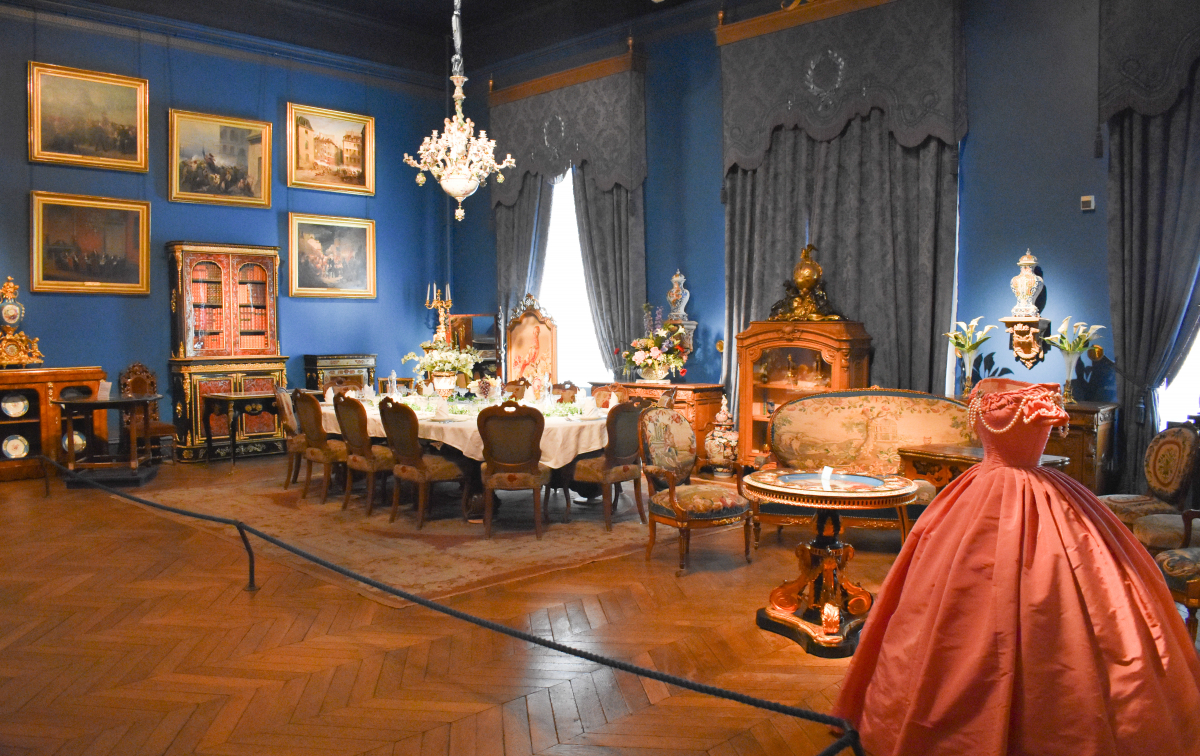
Figure 4: The Dining Room after treatment
Work in Joséphine's Bedroom (room 16) was mainly carried out by Charlotte. As the room’s name suggests it houses an ornate 19th-century bed (Lit à la duchesse) of giltwood and brocade silk. One of the more challenging aspects during the planning stage had been predicting precise time estimates for some of the larger objects (such as the bed) due to the scale and complexity of the structures involved and the need for work to be carried out at height (figure 5.).
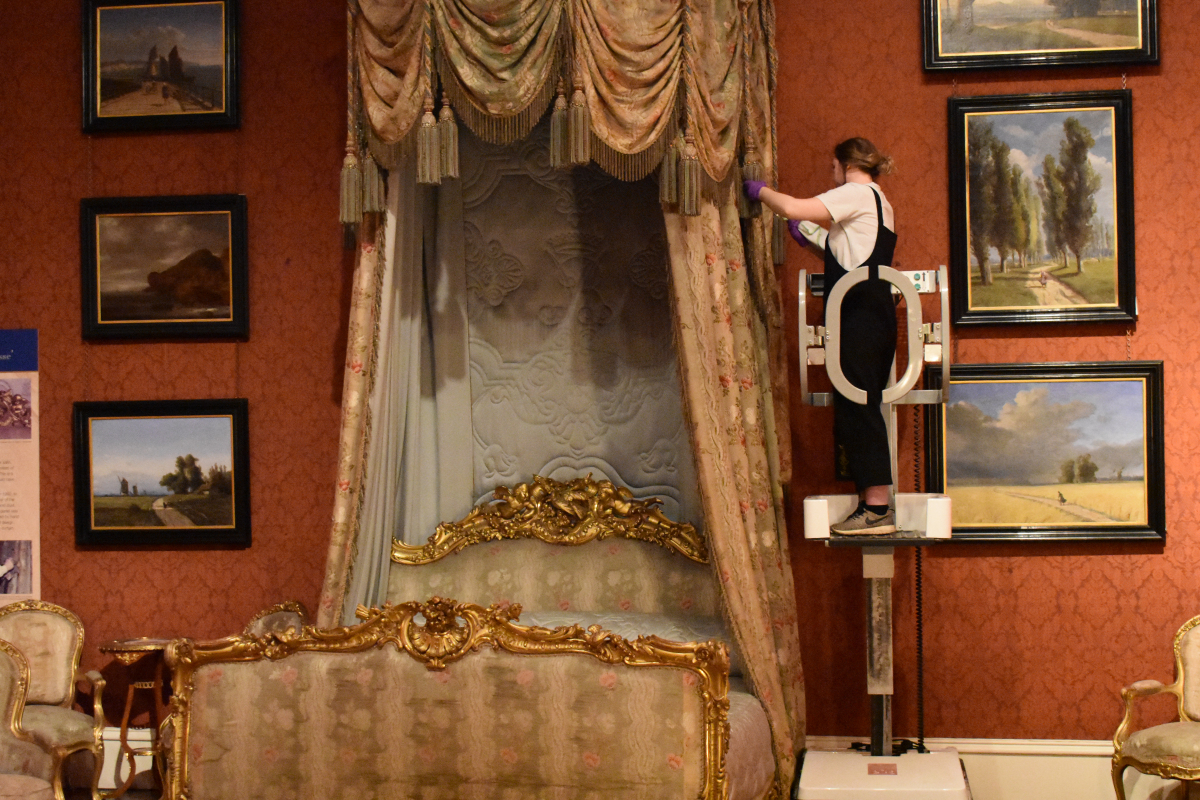
Figure 5: Charlotte surface cleaning Joséphine’s bed
Another carpet from The Rococo Room was surface cleaned with a MuseumVac® by Charlotte in situ. Wet cleaning tests were also carried out on a small corner of the carpet to determine if further treatment would help to remove ingrained soiling. These tests were carried out using a damp microfiber cloth and a method recommended for cleaning knotted carpets at the Icon Textile Group Forum 2018 by Frances Hartog, Senior Textile Conservator at the Victoria and Albert Museum (i) . It was however decided that additional cleaning would not be beneficial or time-effective. Having not wet cleaned an object of this type before (with a pile), it was interesting to have the opportunity to explore a different method of testing.
Fortunately, only minimal insect damage was detected during the deep clean and this was in almost every instance on closer inspection found to be historic. Although Kezia did spot a few months flying about when the dining room was first prepared for the work, relatively few were found anywhere other than the traps, suggesting the traps are doing their job well!
As an additional precaution the low hazard insecticidal spray ‘Constrain’ was used around the parameters of each room, where there were no objects to reduce the numbers of insects entering the rooms from under the floorboards.
Conclusion
The rooms will be closely monitored over the coming months to determine the success of the deep clean at reducing clothes moths’ numbers. Additional moth controls such as Exosex® are being considered which have a track record of success in English Heritage properties (ii) . This treatment works by luring male moths with the female sex pheromone in powder form which the moths pick up, confusing their pheromone receptors and causing them to produce false pheromone trails for other male moths.
In conclusion, we both feel that working in the galleries helped us to get to know parts of the Bowes collection better. We had spent the months prior to lockdown working on a commercial project at the Bowes conserving and mounting historic dress from the Tullie House Museum & Art Gallery in Carlisle for a future display. This meant we worked almost entirely in the conservation lab. As neither of us had worked on a preventive project of this scale before it was eye-opening to play an active part in. Working at home can be quite lonely and we had both missed working with objects hands on. This is the most exciting part of being a conservator, so having spent several months away it was a relief to be back doing work we enjoy. In addition, it was a good opportunity to work to a tight deadline and experience having to make decisions about how best to treat the objects before the museum reopened. This is something of which you do not get the full experience whilst on a degree course. Working in the galleries whilst the museum was closed was quite an eerie experience at times, but it was a privilege to experience working in the museum behind closed doors, and we were glad to have had the opportunity to be back even if additional safety precautions were needed.
---
i. Frances Hartog. “Wet Cleaning Knotted Carpets – A Summary of Clothworkers Fellowship report.” The Nature of Textiles, Icon Textile Group Forum Postprints, 2018.
ii. Dee Lauder. “Update on the IPM Programme at English Heritage,” English Heritage, accessed August 15, 2020, https://www.english-heritage.org.uk/siteassets/home/learn/conservation/c...
---
Lead Image: Creative Commons
Figures 1-5: Charlotte Cameron

